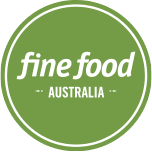Campaigns promoting temporary abstinence from alcohol have made their mark on the calendar, from FebFast and Dry July to Go Sober for October. However, a more permanent change to drinking patterns is emerging, driving enormous growth in the low/no-alcohol drinks market.
From red wine to beer and every type of spirit and pre-mix option imaginable, non-alcoholic drinks are filling the shelves of bottle shops across the globe. They are also turning up on the menus of restaurants and bars who previously only offered sugary mocktails, soft drinks and water for non-drinkers.
According to the No- and Low-Alcohol Strategic Study 2021 from IWSR Drinks Market Analysis, the low/no-alcoholic market has cornered 3 per cent of the market in countries including Australia, the UK, Brazil, Germany, Japan, South Africa and the US, and is forecast to increase by 31 per cent by 2024.
Leading the way is the beer and cider category, which holds a 92 per cent share of all sales in the low/no-alcoholic market globally. While sales have recently slowed, showing only a 0.5 per cent increase, in contrast, the no/low spirits category – which has 0.6 per cent share of the market – increased volume sales by 32.7 per cent. Non-alcoholic wines are also growing in popularity.
This obviously presents opportunities for hospitality venues to join the party and meet the growing demand.
Cheers to that
During the lockdowns brought on by the pandemic in 2020 and 2021 in Melbourne, Brunswick Aces built the first Halal-certified non-alcoholic gin distillery in the world, as well as a bar and two e-commerce websites.
What started off as a backyard project among friends has turned into a viable commercial venture and Stuart Henshall, Brand director and Co-owner, says business is booming.
“It was an uphill battle in the early days to convince bars and restaurants to put a non-alcoholic cocktail on their menus,” he notes. “However, we used the success of the bar to go out there and show that there is a demand. The bar is absolutely pumping, it proves that it’s a thing.”
Brunswick Aces now supplies hundreds of bars and restaurants across Australia with non-alcoholic products, while also exporting to New Zealand, Japan, Singapore, the Middle East, Europe, UK, Canada, and the US.
“The fact that bars and restaurants are adopting non-alcoholic drinks to their menus makes it so much more accessible for people to feel comfortable,” adds Henshall. “They are not stuck with water or a sugary fizzy drink – and it also elevates their experience when they’re in that venue as well.
“We were quite badly hit by the pandemic in terms of our on-premises customers, but that’s now a key focus for us.
“The feedback that we get from our restaurant customers is that they are being asked for non-alcoholic drinks more and more. We’ve become a one-stop shop and source of expertise for bars and restaurants. We curate menus with them and supply everything.”
For low-/no-alcohol supplier Lyre’s, the story is similar. Chief Marketing Officer Paul Gloster explains that the entire range is designed to be true to the taste of the equivalent alcoholic spirit.
“The Lyre’s process is unique in that we never start with an existing product and take the alcohol out,” he says. “We start with the natural flavours, the aromas, the mouthfeel, everything that makes up the essence of the drink, and then carefully layer these onto a non-alcoholic base.
“We’ve had a lot of positive feedback from world-leading, iconic restaurants that now range Lyre’s. They have discovered that there’s a great option available now for people who are not drinking.”
Maturing with age
The proof is in the data. IWSR forecasts that the no- and low-alcohol volume in Australia will grow by 16 per cent by 2024*. The study also found that 71 per cent of Australian consumers intend to increase or maintain their no-or low-alcohol consumption, and 65 per cent plan to try new no- or low-alcohol brands.
Gloster believes restaurants not offering quality no- or low-alcoholic options are missing an opportunity.
“We’re seeing phenomenal growth; the reason is simple – venues are buying more and more because they have customers who keep coming in and asking to make it non-alcoholic,” he says.
“There were people who might sit down for a meal and have one drink and then switch to water. We are seeing a lot of growth out of those consumers because they still want to be part of the dining occasion, enjoying flavours that go well together.
“Extending the food and drink experience by enjoying a cocktail without the booze is a massive plus for many people.”
*This article was originally published in 2022. Data and trends mentioned reflect the context of that time and may have since evolved.
Visit Brunswick Aces and Lyre’s for more information on non-alcoholic drinks.
Article originally published on April 12,2022

